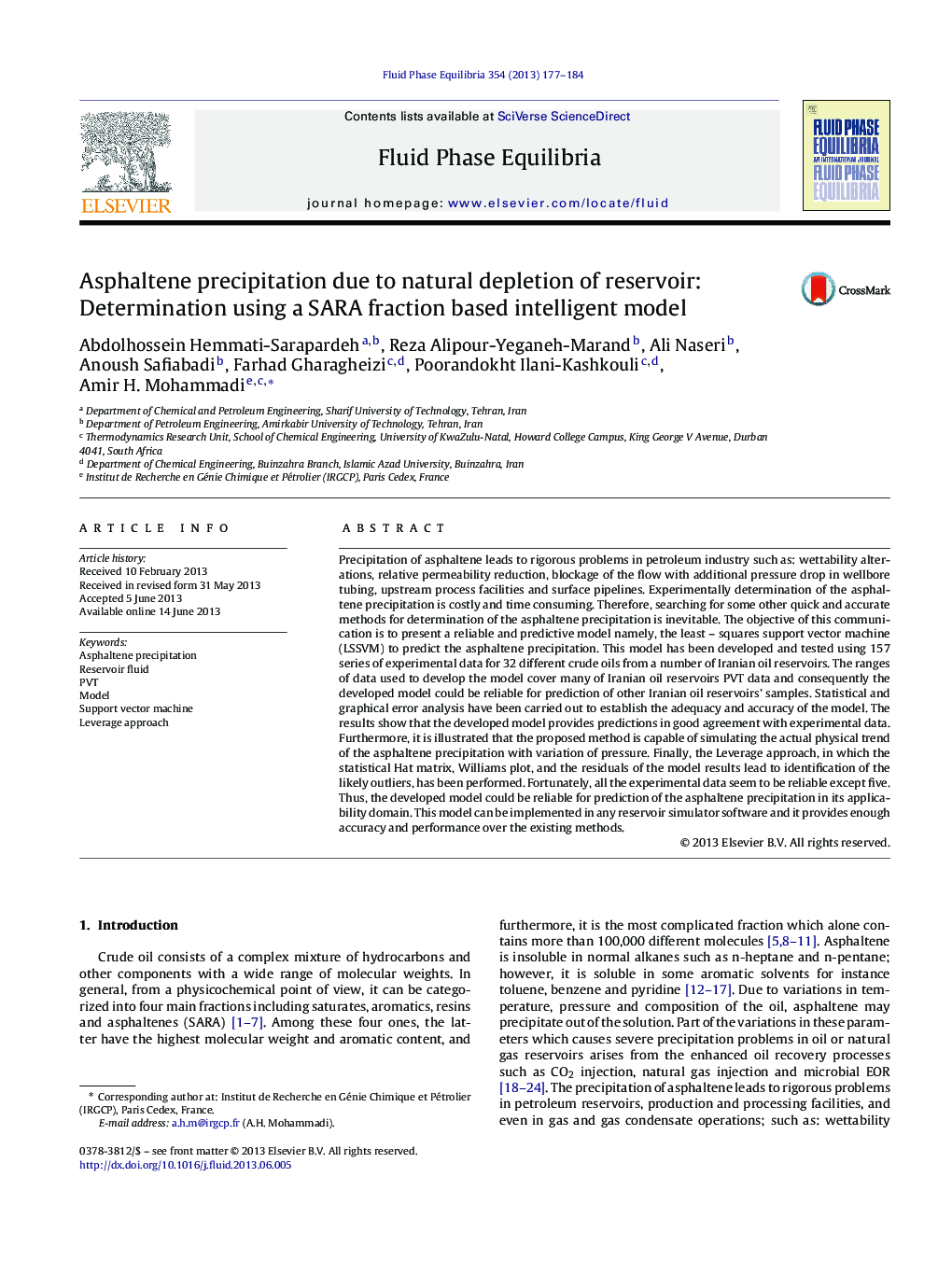| Article ID | Journal | Published Year | Pages | File Type |
|---|---|---|---|---|
| 203398 | Fluid Phase Equilibria | 2013 | 8 Pages |
•A reliable and predictive model namely, LSSVM, is presented to predict asphaltene precipitation.•Error analysis has been carried out to establish the accuracy of the model.•The developed model provides predictions in satisfactory agreement with experimental data.•The method is capable of simulating the actual physical trend of the asphaltene precipitation with variation of pressure.•The Leverage approach has been performed to identify the likely outliers.
Precipitation of asphaltene leads to rigorous problems in petroleum industry such as: wettability alterations, relative permeability reduction, blockage of the flow with additional pressure drop in wellbore tubing, upstream process facilities and surface pipelines. Experimentally determination of the asphaltene precipitation is costly and time consuming. Therefore, searching for some other quick and accurate methods for determination of the asphaltene precipitation is inevitable. The objective of this communication is to present a reliable and predictive model namely, the least – squares support vector machine (LSSVM) to predict the asphaltene precipitation. This model has been developed and tested using 157 series of experimental data for 32 different crude oils from a number of Iranian oil reservoirs. The ranges of data used to develop the model cover many of Iranian oil reservoirs PVT data and consequently the developed model could be reliable for prediction of other Iranian oil reservoirs’ samples. Statistical and graphical error analysis have been carried out to establish the adequacy and accuracy of the model. The results show that the developed model provides predictions in good agreement with experimental data. Furthermore, it is illustrated that the proposed method is capable of simulating the actual physical trend of the asphaltene precipitation with variation of pressure. Finally, the Leverage approach, in which the statistical Hat matrix, Williams plot, and the residuals of the model results lead to identification of the likely outliers, has been performed. Fortunately, all the experimental data seem to be reliable except five. Thus, the developed model could be reliable for prediction of the asphaltene precipitation in its applicability domain. This model can be implemented in any reservoir simulator software and it provides enough accuracy and performance over the existing methods.
